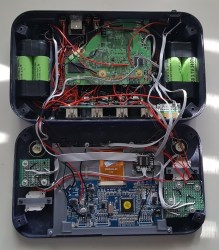If you’ve ever wanted to take a dive into and visualize a game’s code, this could be a seminal example in a literal sense. After twenty-one months of effort, the entire Pokemon Red game is now playable inside Minecraft.
[Mr. Squishy] is the mad genius behind this project, laboriously re-coding the game literally block by block. A  texture pack is needed for the specific sprites, but otherwise it is playable without mods. It’s not immediately apparent when loading in to the level, but chip your way through the floor of the stadium and you are confronted by something awe-inspiring: sprawling constructions, like great soaring cliffs, comprising approximately 357,000 command blocks — equating to the same in lines of code. Every animation, tracked stat, attack and their effects, the various pokemon and their properties, and so on are rendered in the game’s physical space for you to wander through.
texture pack is needed for the specific sprites, but otherwise it is playable without mods. It’s not immediately apparent when loading in to the level, but chip your way through the floor of the stadium and you are confronted by something awe-inspiring: sprawling constructions, like great soaring cliffs, comprising approximately 357,000 command blocks — equating to the same in lines of code. Every animation, tracked stat, attack and their effects, the various pokemon and their properties, and so on are rendered in the game’s physical space for you to wander through.
Beneath that are levels of maps, positional data, properties of those areas, NPCs, and a clever glitch that [Mr. Squishy] used to keep everything loaded at once.
Continue reading “Game-Ception: Pokemon Red Playable Inside Minecraft”




















